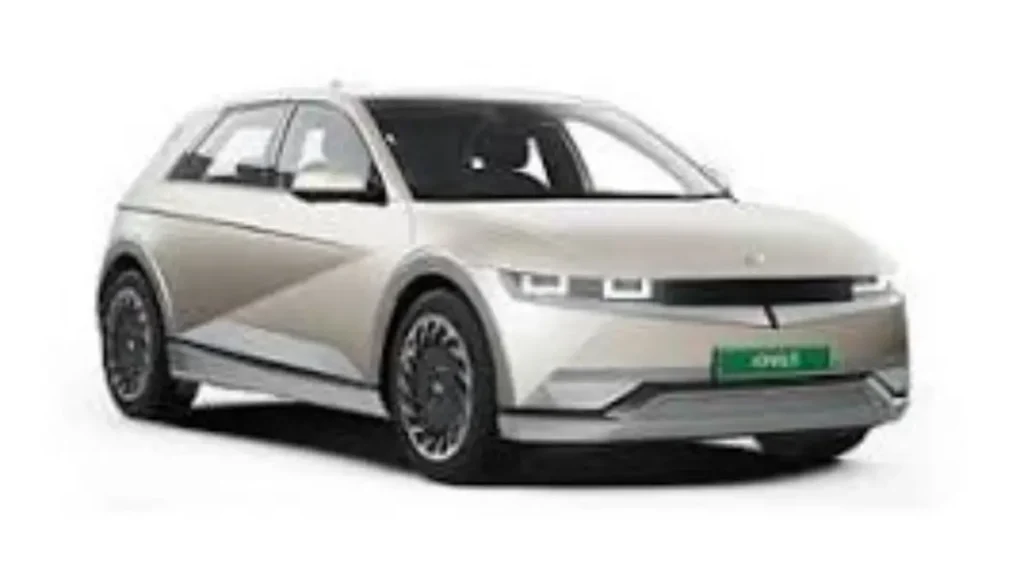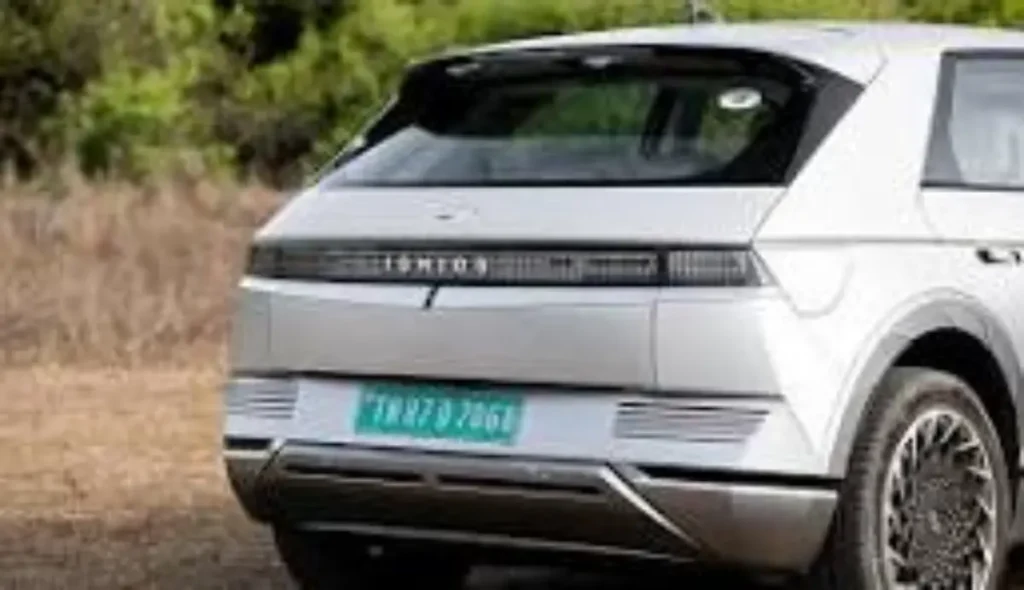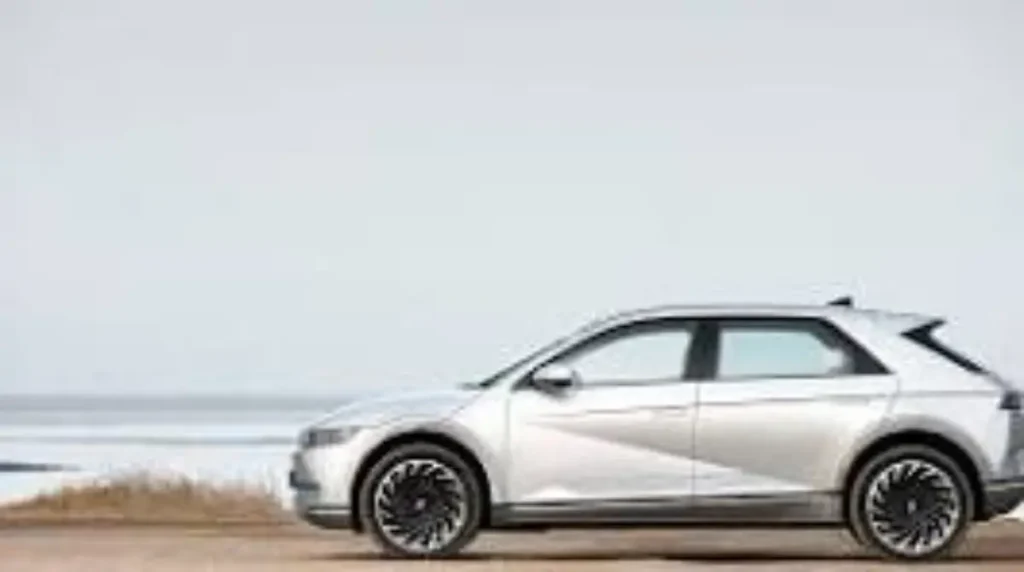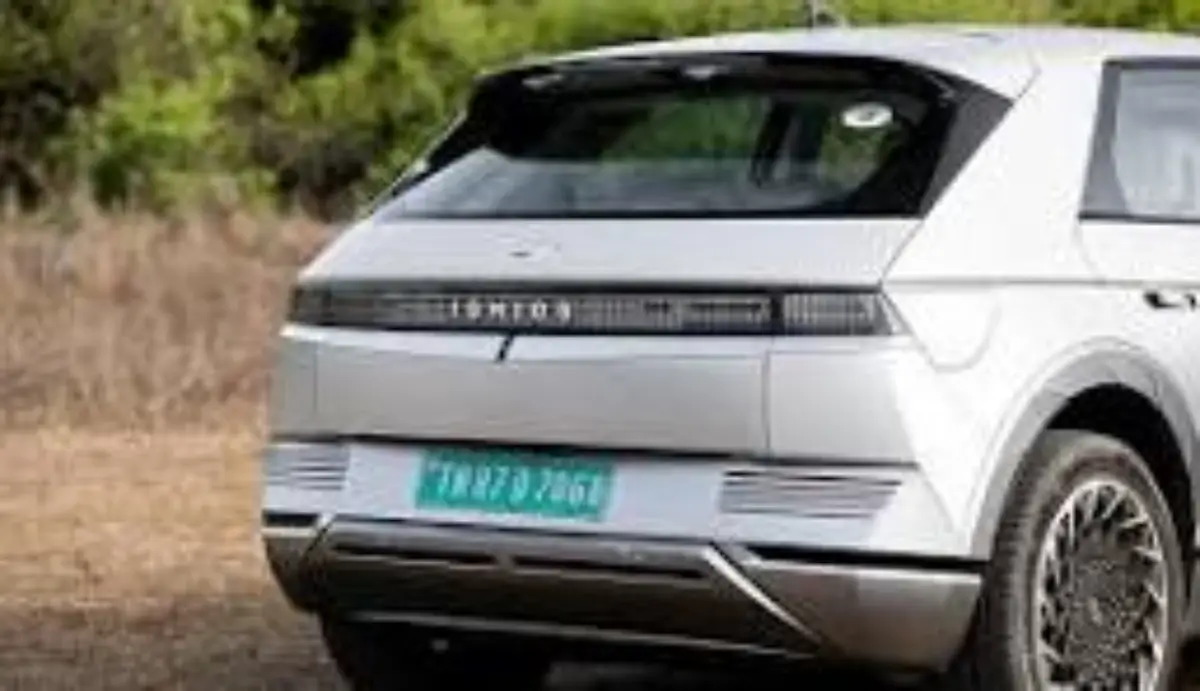Hyundai Ioniq 5 :There are hybrid vehicles and fully electric vehicles. Furthermore, they are not all alike. There are two different Hyundai models: the Hyundai Ioniq 5 and the Hyundai Kona EV. You wouldn’t assume they both belonged to the same parent if you placed your hand on the badge. You wouldn’t even believe that they have the same electric drivetrain! Due to its initial IC engine design, the Kona EV appears to be just another SUV powered by petrol or diesel. The blanked-out grille and all the EV information and data that appears on the display screens when you start the car are two subtle indicators that it isn’t one.

What should an EV therefore look like? First of all, drastically different and futuristic—EVs are, after all, the way of the future. And the Hyundai Ioniq 5, which gives us a clear glimpse of what’s to come, is a car unlike any other. This is due to the fact that the Ioniq 5 is “born electric,” a term that is widely used in the EV community these days and refers to vehicles that were designed to run exclusively on battery power rather than an internal combustion engine (IC).
Hyundai’s first ‘born electric’ vehicle (EV) is the Hyundai Ioniq 5, a brand-new breed unencumbered by the packaging and design restrictions of a large engine and drivetrain under the nose, a fuel tank beneath the back seat and a gearbox and driveline lump under the floor. It is constructed on a specially designed “skateboard” platform that has been optimised for affordability, interior design, and, of course, electrification. Additionally, the skateboard is the E-GMP (Electric Global Modular Platform) from the Hyundai Group, which is sufficiently flexible to accommodate a variety of body types.
In the next five years, Hyundai plans to introduce six brand-new electric vehicles (EVs) to the Indian market, the Hyundai Ioniq 5 being the first. The Ioniq 5 is expected to launch in mid-2022 and will spearhead the Korean automaker’s “top-down” strategy in India. The Ioniq 5 won’t be inexpensive, though. Despite being an EV, it will be introduced as an import and will not be eligible for any reductions in customs duties. The Ioniq 5 is expected to cost between Rs 45 lakh and Rs 60 lakh, depending on the finalised specifications and size of the battery.
Hyundai Ioniq 5 Looking Forward
When it comes to a car that isn’t built around the rigid placement of an engine and gearbox, the Hyundai Ioniq 5 appears fairly standard at first glance—almost disappointingly so. When you look more closely, you can see how the unique design blend of this custom EV is evident. Though the C-pillar has a hint of the Lancia Delta and its angular proportions give it the appearance of a 1980s hatchback, it’s the futuristic details that catch your eye. The highlight of the body’s numerous razor-sharp creases and cuts is the Z-shaped slash on the flanks, which gives the appearance of folded paper.The clamshell bonnet, flush door handles, and 20-inch alloy wheels—which resemble they were made in a wind tunnel—all have a futuristic appearance, but the most avant-garde aspect of this car is its high-tech LED matrix light clusters. The entire car is covered in lights with a pixel theme; the back, in particular, features a full-width matrix strip with a number of square pixel lights that resemble sci-fi lights. The most amazing feature is the light bar for the Daytime Running Lamp located on the upper part of the front bumper. It is not immediately noticeable until it is lit up.

The Hyundai Ioniq 5’s unusually long 3,000mm wheelbase and short overhangs serve as further indicators that it is not your typical crossover. Since the battery pack is located within the wheelbase, extending the wheelbase as much as possible is essential when creating a “born electric” car on a skateboard. Therefore, a larger battery results from a longer wheelbase, which increases range. The increased cabin space and design freedom that come with extending the wheelbase are additional advantages.
As soon as you slide into the Hyundai Ioniq 5’s cabin, this becomes evident. Because the conventional centre console has been removed, the interior of the car resembles an office chair rather than a cockpit. This makes room ahead of the front seats that the air conditioning blower unit, which was previously located under the bonnet—where the engine usually resides—would have taken up. A prime example of the benefits that this custom architecture’s packaging offers is the HVAC system’s ability to be moved, which is limited to “born electric” vehicles. The front seats can be pushed forward to create more room in the back because there is no centre console.
It should come as no surprise that the back seat is incredibly roomy—even for tall people—and that sitting three abreast is quite convenient thanks to the entirely flat floor. There are further benefits to the flat floor. It permits a good 140mm of sliding for the console between the front seats. Therefore, you can slide it forward if the middle passenger behind needs a little extra room to stretch out. It can be slid back, though, if people behind want simple access to the two charging ports behind the console.
However, the E-GMP has drawbacks as well, most of which are related to the lithium slab beneath the floor. The floor is forced upward by the battery pack, forcing you to sit with your knees slightly bent. Although it’s not uncomfortable, the absence of under-thigh support will be missed on lengthy drives. The car’s “save-the-world” philosophy is reflected in the minimalist style of the light, eco-friendly fabrics that cover the remaining seats, even though the seats themselves are fairly thin but still provide plenty of cushioning.
The dashboard is a straightforward, incredibly thin panel that has two 12.3-inch screens on top and a separate touch-sensitive air conditioning control panel below. The touchscreens are extremely sharp and give you all the information you need, making them easy to read even in bright light. They could respond a little more quickly, but a software adjustment should fix that. You can attach toll tickets, parking receipts, spouse photos, your favourite car (not a Kona EV, though!), or anything else you’d like to your touchscreen panel’s outer edge.
Hyundai Ioniq 5 On A Charge
There are two different battery packs available for the Ioniq 5. With a 72kWh battery, the base model’s range is claimed to reach 481km, while the official test cycle is good for 383km with a 54kWh pack. With its rapid 800V charging capability, the E-GMP can theoretically fully charge a battery in just eighteen minutes! However, it will take some time before the Ioniq 5’s fast-charging capability can be fully utilised in India, where the majority of chargers have an output of 25kW or 50kW at most.

Additionally, there are various power outputs; the base model only has rear-wheel drive and produces 170 horsepower. Hyundai is probably going to bring the top-spec model, which has two motors (one for each axle) and 306 horsepower, making it more powerful. It’s also a 4×4. I had a brief opportunity to drive this top-spec version, and it was remarkably fast right away. When you poke the accelerator, an electric rod-prodded rabbit appears, and that is exactly what we expect from an electric vehicle (EV), which is the Ioniq 5. It does a good job of hiding its 2,100 kg curb weight when it comes to handling and acceleration.It is faster than anything else for the money, reportedly reaching 100 kph in 5.2 seconds, and it also leaps forward smoothly and silently, which is a bonus. The Ioniq runs out of volts at the top speed, just like most EVs, and performance decreases significantly over 130 kph. It’s quick and simple to overtake in most situations, and a satisfying lunge towards the horizon occurs when the right foot is flexed. However, it’s also evident that the Ioniq 5 is not a performance car; on the contrary, it feels very sporty.
The overall dynamics won’t entice you to seek out a twisty road or toss the car into a corner, but the battery pack ties it down nicely and the steering is precise and fast. In addition to its roomy cabin, the Ioniq offers an exceptionally comfortable ride and a quiet, stress-free driving experience that makes it possibly the most comfortable electric vehicle available. Although it will cost a lot, you are purchasing a piece of the future, and the Ioniq 5 is the only car that is currently as futuristic as it gets.
Hyundai Ioniq 5 Review on You-Tube
Also Read: Energizing the Market: Tata Nexon EV Facelift Makes Waves
Share to Others
